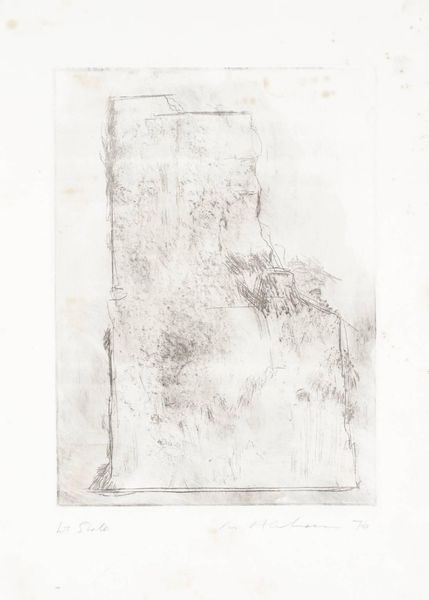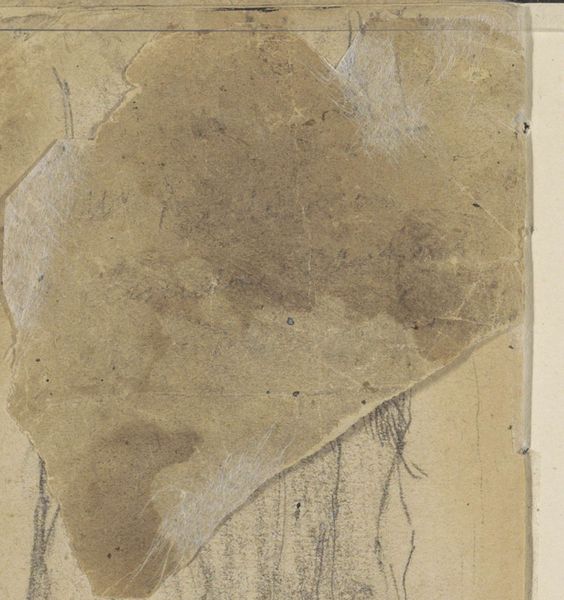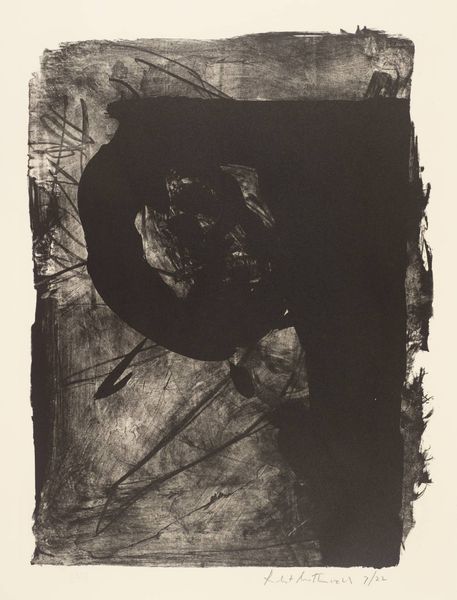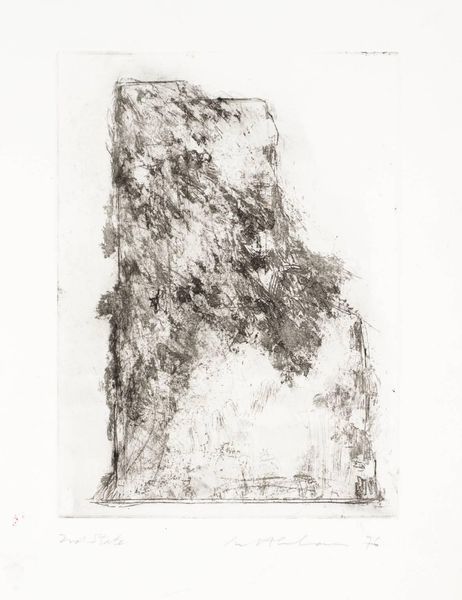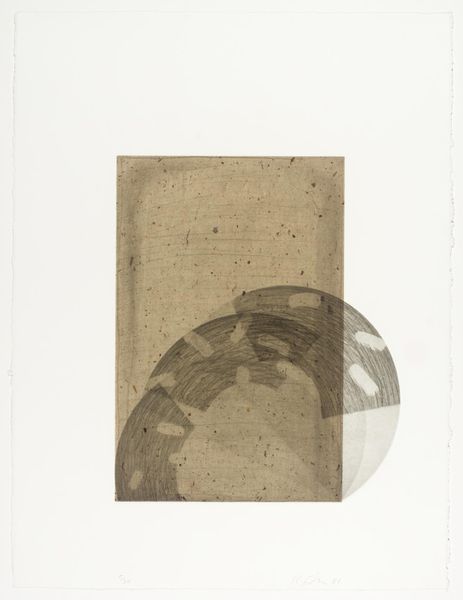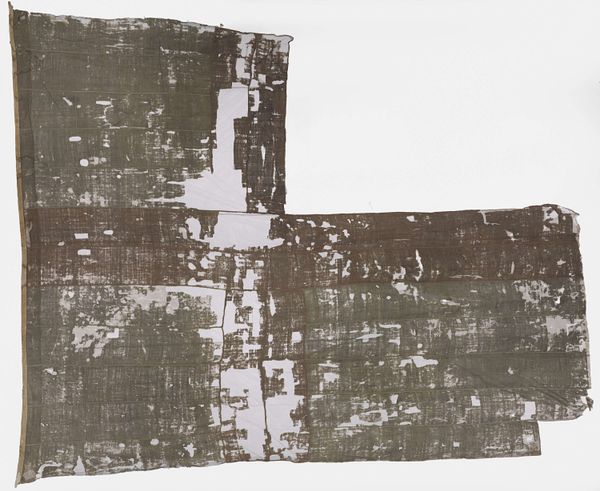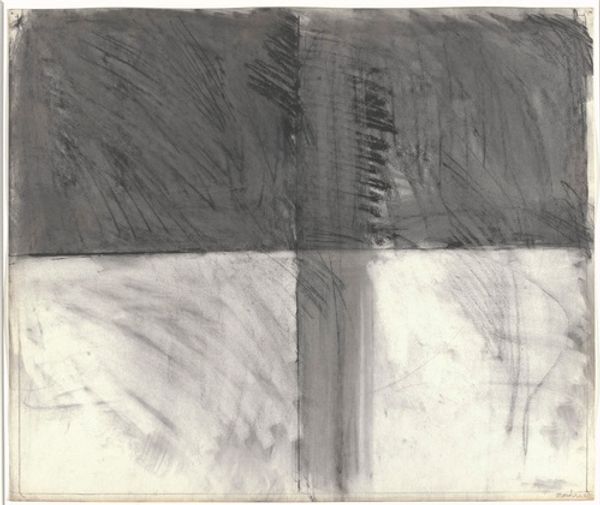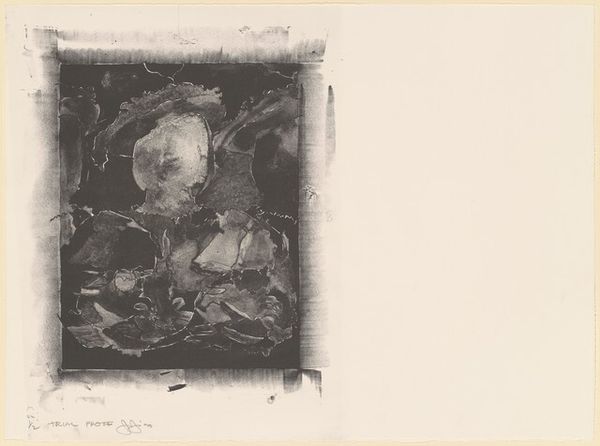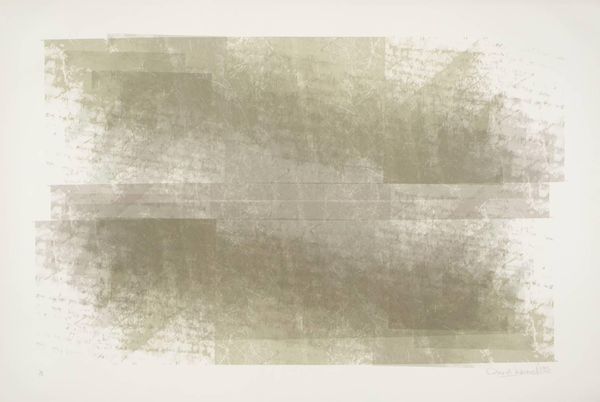![Szobar II [top panel] by Laszlo Dus](/_next/image?url=https%3A%2F%2Fd2w8kbdekdi1gv.cloudfront.net%2FeyJidWNrZXQiOiAiYXJ0ZXJhLWltYWdlcy1idWNrZXQiLCAia2V5IjogImFydHdvcmtzL2QwZWI5NGU3LWZkZmQtNDU5NC05ZGU4LTliOWRiYTk4YmE2NC9kMGViOTRlNy1mZGZkLTQ1OTQtOWRlOC05YjlkYmE5OGJhNjRfZnVsbC5qcGciLCAiZWRpdHMiOiB7InJlc2l6ZSI6IHsid2lkdGgiOiAxOTIwLCAiaGVpZ2h0IjogMTkyMCwgImZpdCI6ICJpbnNpZGUifX19&w=1920&q=75)
Dimensions: plate: 91.44 × 58.42 cm (36 × 23 in.) sheet: 101.6 × 66.68 cm (40 × 26 1/4 in.)
Copyright: National Gallery of Art: CC0 1.0
Curator: Laszlo Dus created "Szobar II [top panel]" in 1978. This intriguing work blends the mediums of drawing and print, resulting in a rather enigmatic piece of abstract expressionism. Editor: Immediately, I am struck by the contrast – a rough, organic form juxtaposed against what seems to be a rigid geometric background. There's an unsettling feeling, almost like observing an anatomical study struggling against a structured environment. Curator: Precisely. Note how Dus employs a network of delicate lines to construct the central figure, an amorphous shape pierced by a clean, perfect circle. This immediately creates tension in the visual field. Consider the artist's emphasis on line as form and void working in concert. Editor: I'm interested in the almost architectural quality of the grey area behind it. Given Dus's socio-political context in Hungary in the late 70s, does this backdrop speak to ideas of imposed structure, perhaps even oppressive systems against which individuality is suffocating? The bright emptiness in the center feels like an absent face, representing a silencing, or maybe a loss. Curator: An excellent observation! The artist might be using formal contrasts, such as organic vs. geometric forms, to symbolize conflicts of order and chaos or control versus freedom, elements central to discourse on power. The geometric background isn't purely that. Close scrutiny reveals the layering, adding an organic effect that complements, even blends, with the image. The pencil sketch base gives it the expressionism label through an artistic vocabulary beyond just forms, or shapes, or background elements, but through the total sensory feeling when observed. Editor: It really comes through—Dus evokes profound questions through abstraction itself. I mean, it invites the viewer to participate in completing the picture and making sense of the unspoken. Curator: And perhaps that invitation to participation, that act of questioning, is its most potent social function. The dialogue opened goes well beyond the object we view. Editor: So even through these lines and shapes, we end up thinking about society, art, and ourselves differently. Fascinating.
Comments
No comments
Be the first to comment and join the conversation on the ultimate creative platform.
